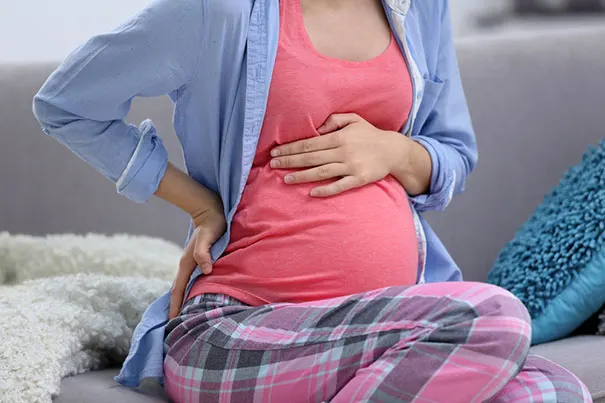Braxton Hicks Contractions Compared to Real Contractions
Towards the end of your pregnancy, it's normal to wonder how you'll know when you're in labour. It can be especially confusing if you experience contractions in the second or third trimester that go away without leading to labour. These are called Braxton Hicks contractions, and they're one of the ways your body gets ready for labour.
What Are Braxton Hicks Contractions?
Also known as “false” or “practice” contractions, Braxton Hicks contractions are not actual labour contractions, but they are caused by the muscles of the uterus tightening, just as real labour contractions are. Knowing what Braxton Hicks contractions feel like can help you determine whether you're experiencing practice or real labour contractions when they occur. False contractions typically feel like a tight squeezing of the abdomen or like familiar menstrual cramps.
You don't necessarily need to do anything if you feel Braxton Hicks contractions. Taking a walk, resting, or changing positions might help them go away, but each woman's experience is different.
What Do Braxton Hicks Contractions Feel Like?
Braxton Hicks contractions can be mild — you may detect sensations of tightening and relaxing of the uterus — but they can also be a bit more painful. These contractions may start out feeling something like familiar menstrual cramps, but can grow more intense in the final few weeks of pregnancy.
Luckily, there are a few ways to help ease the discomfort of these contractions, while also confirming that labor hasn't started yet. Try to change positions if you're seated or lying down, or go for a brief walk if possible. Movement can help these contractions subside. False contractions are also more likely to strike when you're dehydrated, so be sure to drink plenty of water, especially as your due date approaches.
Braxton Hicks vs. True Labour Contractions
If your pregnancy isn't yet full term, you might worry you're going into preterm labour at the first sign of a contraction. You might also wonder whether the contraction you're feeling is another Braxton Hicks or if it's finally the real deal.
To help sort this out, you'll want to familiarise yourself with the symptoms of labour and to keep these Braxton Hicks symptoms in mind:
False contractions are irregular and do not get closer together in time. A good way to double-check is to time the contractions.
False contractions are weak and don't get stronger, or they start strong, but then get weaker. However, as your due date approaches, stronger and more frequent Braxton Hicks contractions may occur.
Practice contractions stop when you walk, rest, or change positions.
You feel the discomfort of the contractions at the front of your abdomen. (True contractions can start at the back and move toward the front of your abdomen.)
Braxton Hicks Contractions | True Labor Contractions |
Contractions are irregular and do not become more frequent. They may occur, for example, in intervals of ten minutes, then six minutes, two minutes, eight minutes, etc. | Contractions are regular, predictable (such as every eight minutes), and grow closer together over time. |
Contractions do not become more intense. | You experience a steady increase in frequency and strength of contractions. |
Contractions are felt in the front of the body. | Each contraction is felt starting at the lower back, and then radiating around to the front, low in the groin. |
A change in activity or position may cause contractions to lessen or stop. | A change in activity or position will not slow or stop contractions. |
While you may be wondering: How long do Braxton Hicks last, these contractions are irregular, and they can even stop in response to your movements. They are more likely to occur in the afternoon or evening or after vigorous physical activity.
Call your doctor if you're in doubt about what you're experiencing, or if you notice any of the following:
Contractions continue even if you move around
Contractions come at regular intervals, and get stronger and more frequent over time
Vaginal bleeding
Fluid leaks or gushes from your vagina.
Do Braxton Hicks hurt? Although these false contractions are completely normal, Braxton Hicks contractions can sometimes be painful, so contact your doctor for advice if you feel any pain.
When Do Braxton Hicks Contractions Start to Happen?
Usually, they start in the third trimester, though you might notice them in the second trimester, as well. Braxton Hicks contractions may begin a little earlier if this is not your first pregnancy.
Braxton Hicks contractions can cause a little discomfort, but they're a completely normal part of pregnancy, and they're helping your body prepare for the big day when you actually go into labour. To help you feel even more prepared, read up on comfort measures during labour, and check out what to expect in terms of healing after childbirth.
FREQUENTLY ASKED QUESTIONS
Typically, each contraction will last between 30 seconds and 2 minutes. The duration of each contraction may vary, but Braxton Hicks contractions differ from true labor contractions in that they do not get stronger or increase in frequency. You may be able to stop these contractions with some gentle movement or a walk, or by simply changing your position.

